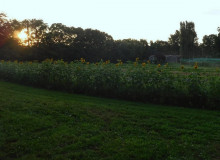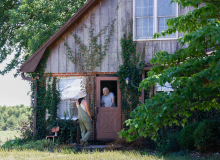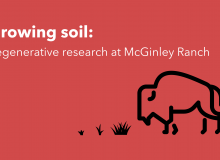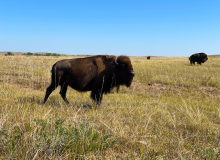regenerative agriculture
University of Missouri
Climate change is redrawing the agricultural map of the United States. As corn becomes less economically viable with changing Midwestern weather patterns, farmers look to a more diverse future.
Multimedia Editor, Planet Forward
In September 2022, four university students from around the country, along with Frank Sesno and Dr. Imani Cheers, traveled to McGinley Ranch in the Sandhills of northern Nebraska to study and report on the unique features of this expansive project.
University of Missouri
Declining rangeland and rising temperatures have livestock ranchers searching for solutions. To South Dakota State University research assistant Anlly Fresno Rueda, a bison’s gut is as good of a place to start looking as any.
The University of Wisconsin-Madison
Old Mason jars filled with heritage corn and tins of commercial tobacco are what planted the initial idea for the Goldman Lab’s Inter-Tribal Seed Stewardship Initiative.

Sunflower bed in bloom in the fall of 2019 at Homefields Incorporated, a 23-acre community-led farm. (Max Sano/Franklin & Marshall College)
Planet Forward Senior Correspondent | New York University
The U.S. food supply chain needs a complete makeover in light of the COVID-19 crisis. A new plan should incorporate several areas of focus, including expanding funding into current organic and regenerative agriculture.




_0.jpg%3Fitok=NCsEOErG)